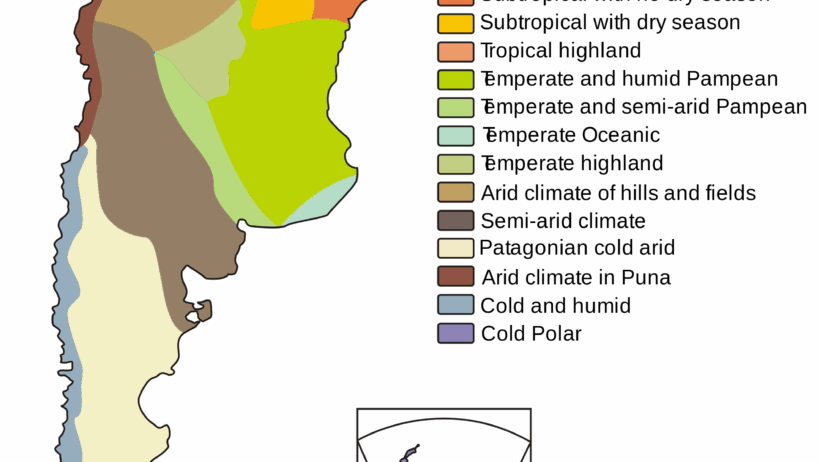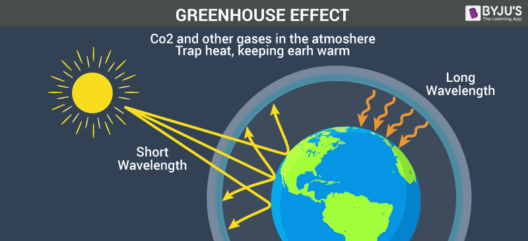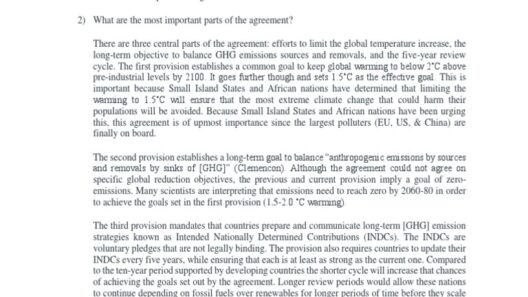Argentina, the eighth largest country in the world, is extraordinarily diverse not only in its landscapes but also in its climate. Spanning from the tropical north to the frigid south, the climate of Argentina presents a mélange of weather patterns that are influenced by varied topography, geographic location, and oceanic currents. This article aims to delineate the complexities of Argentina’s climate, providing a comprehensive overview of the various climatic zones and the implications of these variations.
The significance of understanding Argentina’s climate extends beyond mere meteorological interest; it plays a critical role in agriculture, biodiversity, and human settlement patterns. As the nation grapples with the ramifications of climate change, it becomes increasingly vital to comprehend the underpinnings of its diverse climate profile.
Argentina presents a multitude of climate zones, each with its own unique characteristics. From the arid deserts of the west to the lush subtropics in the northeast, the climate oscillates dramatically. This richness can be categorized into several distinct zones, which will be explored in detail below.
In the northwestern region lies the Andean foothills, characterized by a high-altitude desert climate. This area experiences minimal precipitation and is often subjected to glaring sunlight, resulting in significant diurnal temperature variation. In stark contrast, the upper cordillera harbors highland climates with glacial temperatures and summer thaws, underlining a fascinating paradox in proximity.
As we transition to the Gran Chaco region—a subtropical area encompassing parts of northeastern Argentina—the climate becomes significantly more humid. The region showcases hot summers, with temperatures frequently soaring above 35 degrees Celsius, juxtaposed with mild winters. Rainfall here is abundant compared to the northwest, making it a vital area for agricultural production.
Moving further south, one encounters the Pampas, one of Argentina’s most celebrated regions. This expansive plain enjoys a temperate climate characterized by moderating influences from the Atlantic Ocean. The Pampas experience well-defined seasons: hot summers, crisp autumns, gentle springs, and cold winters. The region’s rich soils, coupled with a favorable climate, render it the backbone of Argentina’s agricultural prowess.
From the arid climates of the northwest to the subtropical warmth and finally to the temperate expanse of the Pampas, the transition into southern Patagonia brings an entirely new set of climatic conditions. Here, a subpolar oceanic climate reigns supreme. Winters are long and harsh, marked by solid precipitation, while summers are short yet pleasant. The fjords and inlets along the southern coast showcase a maritime influence that cultivates a unique ecological niche, resulting in spectacular biodiversity.
Sneaking below the parallel of 40° S, one could imagine being transported to a realm where the climate is ruled by relentless winds and dramatic temperature drops. The Tierra del Fuego archipelago, situated right at the southernmost tip of South America, presents a subpolar oceanic climate, often considered inhospitable. This region witnesses snowfall and strong winds year-round, transforming the rugged landscapes into a hauntingly beautiful tapestry.
The interaction of climatic zones with human activities cannot be underestimated. Argentina’s economy, hinging on agriculture, biodiversity, and tourism, is intricately woven into its climate patterns. The shift from traditional crops to more climate-resilient species signals an adaptation journey that reflects the realities of climate variability.
However, climate change looms as an undeniable threat, exacerbating pre-existing vulnerabilities in various regions. The changing precipitation patterns in the Gran Chaco, shifting fauna and flora in the Patagonia, and increasing temperatures across the Pampas are concerning indicators of a climate undergoing upheaval. This has necessitated crucial steps for mitigation and adaptation strategies, offering opportunities for reform and sustainability in agricultural practices.
In light of the pressing climate crisis, embracing ecological stewardship becomes indispensable. Incentivizing sustainable agriculture, embracing renewable energy sources, and fostering conservation efforts will become paramount if Argentina aims to safeguard its diverse climatic heritage for future generations.
In conclusion, understanding what constitutes the climate of Argentina requires an appreciation for its multifaceted character. The divergent climatic zones, each with its distinct attributes, shape not only the natural world but also the cultural and economic aspects of life in Argentina. Moving forward, it becomes essential to recognize the intricate interplay between climate, ecology, and human endeavors, paving the way for proactive engagement with environmental challenges.






